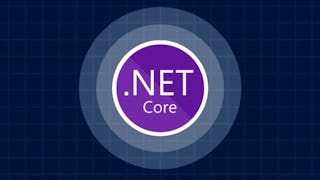This course takes you on a journey through the fundamentals and advanced techniques of behavior-driven development (BDD) using Specflow and Cucumber in a .NET environment. You'll begin by understanding the core principles of BDD, why it matters, and how Cucumber, combined with Gherkin, allows you to write easy-to-read test scenarios that everyone on your team can understand. You'll also explore the benefits of using Gherkin as a universal language for expressing business requirements, along with a deep dive into user stories, testing workflows, and maintaining a single source of truth.



Specflow and Cucumber for .NET Developers - The Master Guide

Instructor: Packt - Course Instructors
Access provided by PTT Global Chemical
Recommended experience
Recommended experience
What you'll learn
Identify and recall key concepts of behavior-driven development (BDD) and Gherkin syntax.
Explain the purpose and structure of feature files and acceptance tests in Specflow.
Implement Gherkin scenarios and step definitions using Specflow in .NET projects.
Differentiate between various Specflow binding techniques and test strategies.
Details to know

Add to your LinkedIn profile
6 assignments
See how employees at top companies are mastering in-demand skills


Earn a career certificate
Add this credential to your LinkedIn profile, resume, or CV
Share it on social media and in your performance review

There are 16 modules in this course
In this module, we will introduce you to the course and outline what you can expect to learn. You'll also discover who the course is designed for, ensuring that you have the necessary background to succeed.
What's included
2 videos1 reading
In this module, we will delve into the fundamentals of Behavior-Driven Development (BDD) and explore how Cucumber and Gherkin facilitate this approach. You'll learn the importance of Gherkin as a universal language for capturing business requirements and how it serves as a single source of truth throughout the development process.
What's included
11 videos
In this module, we will provide a comprehensive crash course on Gherkin, the language used for writing BDD scenarios. You’ll explore each Gherkin keyword in detail, understand their purposes, and learn how to structure your feature files. By the end, you'll be equipped to write robust Gherkin scenarios that serve as the foundation for behavior-driven testing.
What's included
21 videos1 assignment
In this module, we will introduce you to SpecFlow, a powerful tool for implementing BDD in .NET projects. You'll learn why SpecFlow is essential for .NET developers, explore different types of SpecFlow tests, and get hands-on experience by installing and testing SpecFlow extensions in your preferred development environment.
What's included
10 videos
In this module, we will guide you through the process of binding steps in SpecFlow, a crucial aspect of BDD. You'll start with a clean slate, create a SpecFlow class, and learn how to bind steps effectively. We will also cover how to resolve unbound steps, customize configurations, and run your tests to ensure everything is functioning correctly.
What's included
9 videos
In this module, we will focus on how SpecFlow manages parameters within your test scenarios. You'll learn how to work with various types of parameters, including strings, integers, and datatables, and how to debug them to ensure they are handled correctly. This knowledge will enable you to write more dynamic and flexible BDD tests.
What's included
5 videos1 assignment
In this module, we will dive into handling Gherkin datatables using SpecFlow's Table Assist feature. You'll learn how to leverage helper methods to create instances and compare data within your tests, ensuring your scenarios are both accurate and efficient. We'll also cover how to fix common implementation issues to optimize your BDD workflow.
What's included
7 videos
In this module, we will explore the concept of SpecFlow hooks, which allow you to execute specific actions at various points in your test run. You'll learn how to use hooks for logging, managing execution order, and passing context dependencies. We’ll also cover error handling within hooks, providing you with the tools to create more reliable and maintainable test suites.
What's included
10 videos
In this module, we will focus on effectively splitting and organizing features and steps within your SpecFlow projects. You'll learn how to refactor your code by separating step files, which can help in managing large test suites more efficiently. We will also discuss how to handle ignored and context-pending steps to maintain clarity and functionality in your tests.
What's included
6 videos1 assignment
In this module, we will explore techniques for sharing data between SpecFlow scenarios using context and dependency injection. You'll learn about the SpecFlow context system, how to merge scenario context properties, and how to implement a base class approach with dependency injection. By the end, you'll have a comprehensive understanding of the different methods available and how to choose the best one for your testing needs.
What's included
8 videos
In this module, we will delve into advanced SpecFlow features focused on value retrievers. You'll learn how to work with built-in retrievers for DateTime and Enums and create custom retrievers for more complex data types. We’ll also address challenges like handling null values and parsing comma-separated lists, ensuring you have the tools to customize SpecFlow for any scenario.
What's included
14 videos
In this module, we will explore the concept of step argument conversions in SpecFlow, which allows for the transformation of data passed into steps. You'll tackle a conversion challenge to solidify your understanding and learn how to handle complex data types using custom transformations, including IEnumerable table arguments. By the end, you'll be equipped to manage argument order precedence effectively to optimize your BDD scenarios.
What's included
7 videos1 assignment
In this module, we will explore advanced techniques in SpecFlow, focusing on hooks, scopes, and asynchronous step definitions. You'll learn how to write async step definitions to improve test efficiency and how to restrict hook scopes using various logical combinations like AND/OR at different levels. Additionally, we'll cover scoped bindings to ensure your tests remain well-organized and adaptable to changes.
What's included
8 videos
In this module, we will cover the different approaches for running SpecFlow tests, whether via the Test Explorer in Visual Studio or using command-line tools like dotnet test and vstest.console. You’ll also learn how to integrate SpecFlow tests with Azure DevOps and execute tests in parallel using multiple frameworks, ensuring your test runs are both efficient and scalable.
What's included
10 videos
In this module, we will focus on best practices for organizing your SpecFlow project. You’ll learn how to separate feature files and business models into distinct sections, making your project easier to navigate and maintain. Through practical tidying up strategies, you’ll ensure that your project structure remains clean and efficient, supporting smooth collaboration and future scalability.
What's included
5 videos1 assignment
In this concluding module, we will wrap up the course by revisiting the essential concepts and skills you've gained. We’ll also encourage you to apply these techniques in your development work and offer suggestions for further expanding your knowledge in behavior-driven development. Thank you for being a part of this learning journey!
What's included
1 video1 assignment
Instructor

Offered by
Why people choose Coursera for their career




Explore more from Computer Science

Open new doors with Coursera Plus
Unlimited access to 10,000+ world-class courses, hands-on projects, and job-ready certificate programs - all included in your subscription
Advance your career with an online degree
Earn a degree from world-class universities - 100% online
Join over 3,400 global companies that choose Coursera for Business
Upskill your employees to excel in the digital economy








